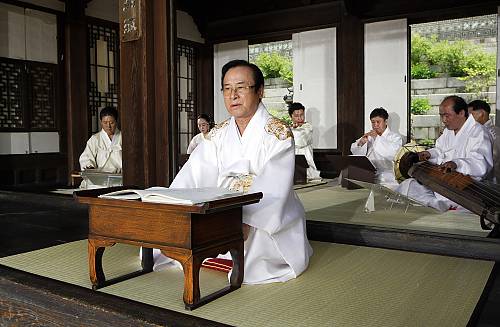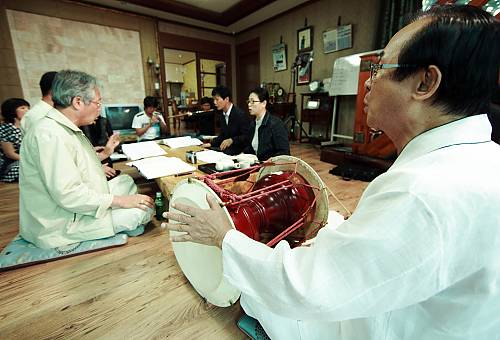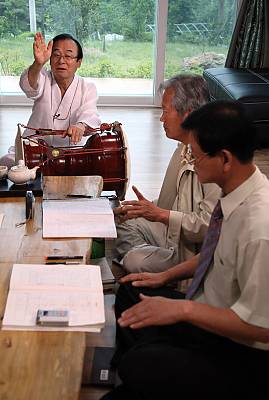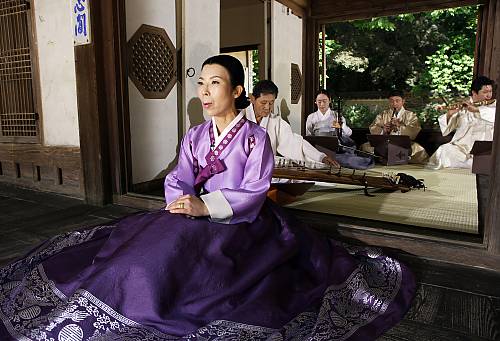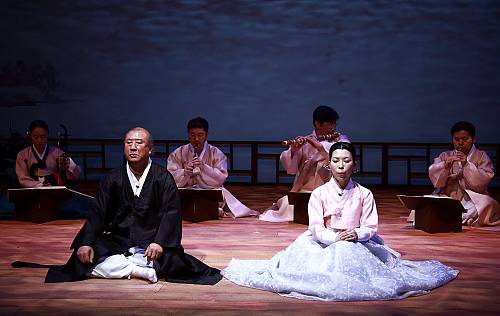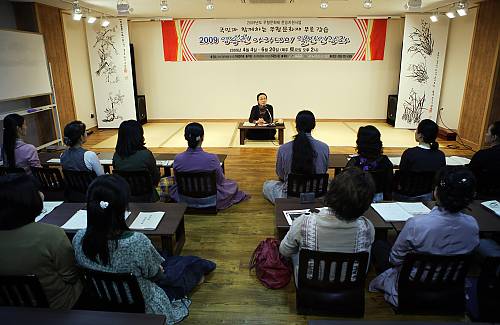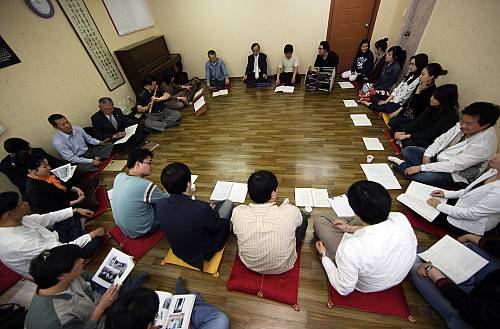Gagok, lyric song cycles accompanied by an orchestra
Inscribed in 2010 (5.COM) on the Representative List of the Intangible Cultural Heritage of Humanity

Gagok is a genre of traditional Korean vocal music sung by men and women to the accompaniment of a small orchestra, one of several forms of singing that together constitute jeongga, or ‘right song’. Formerly a music associated with the higher classes, Gagok is today widely popular throughout the country. Gagok comprises twenty-six namchang or songs for men, and fifteen yeochang or songs for women. Namchang are characterized by strong, deep, resonant voices, while yeochang are characterized by high-pitched, thin voices. Gagok songs are composed either in a solemn, peaceful key or a melancholic one, and use 10-beat or 16-beat rhythm. The traditional instrumentation of the orchestra includes the geomungo six-string zither, daegeum bamboo transverse flute, gayageum twelve-string zither and piri (small double-reed pipe). Gagok songs are acclaimed for their lyrical patterns, balance, refined melodies and advanced musical composition. Acquiring skill as a singer takes extensive time and effort and performance requires dedication and extreme control. Gagok is preserved and transmitted by practitioners, their communities and related organizations in local heritage training centres. Gagok has played an important role in the establishment of Korean identity.
